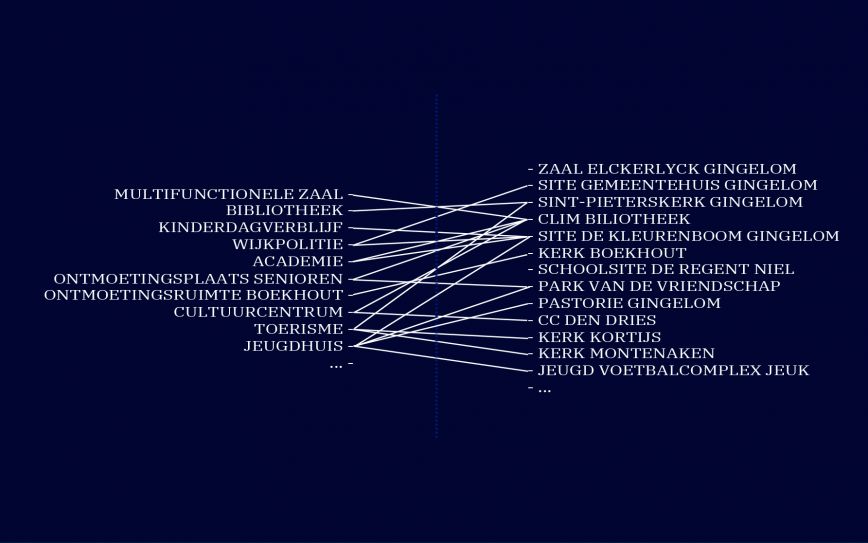patrimony investigation
This study aimed to investigate the link between the spatial needs of the municipality of Gingelom and its building heritage. As part of this study, RE-ST closely examined the current heritage and defined several preferred scenarios
Research
The merged municipality of Gingelom consists of eleven sub-municipalities, each with several buildings that serve a community purpose. The function and use of these buildings developed historically, evolved and changed over the years, and hasn’t adapted to current or future needs. The goal of this study was to help the municipality develop a sustainable future vision of this heritage and allocate appropriate budgets.
The heritage sites were visited and studied over the course of two days. After discussions with the internal working group, the board, and the municipal council, the list was amended to include 51 buildings. For the sake of completeness, buildings that served the community but were not owned by the municipality were also added to ensure a clear overview. The heritage was divided thematically into municipal heritage, church heritage, event halls, school heritage, and sports/leisure.
In order to streamline the list of buildings, it was important to identify the specific needs of the municipality. Our plan included meeting with municipal service providers, associations, board members, residents and visitors while also drawing on our own experience, studies, and research. The identified needs were categorised into the relevant themes.
This study helped us to determine several possible scenarios that could present potential solutions to the issues raised in the needs assessment. These were translated into a scenario study based on our design study. After consulting with the municipal services working group and the Gingelom board, we arrived at a preferred scenario. One decision was to accommodate the multifunctional space within the current CLIM library. The library would, in turn, relocate to the Saint Peter’s church to help repurpose the church in a meaningful way. The current daycare centre would be expanded after a thorough renovation of De Kleurenboom school. The community centre in Boekhout would be housed in the local church.

In addition to addressing these urgent issues, the study also made several proposals for the municipal council. The study was unanimously approved by the majority and minority parties, allowing for its use in both this and future administrations. When new developments and new needs arise, it's always a good idea to step back and assess the situation before making any decisions. This can lead to a sustainable development vision and the right investments.



